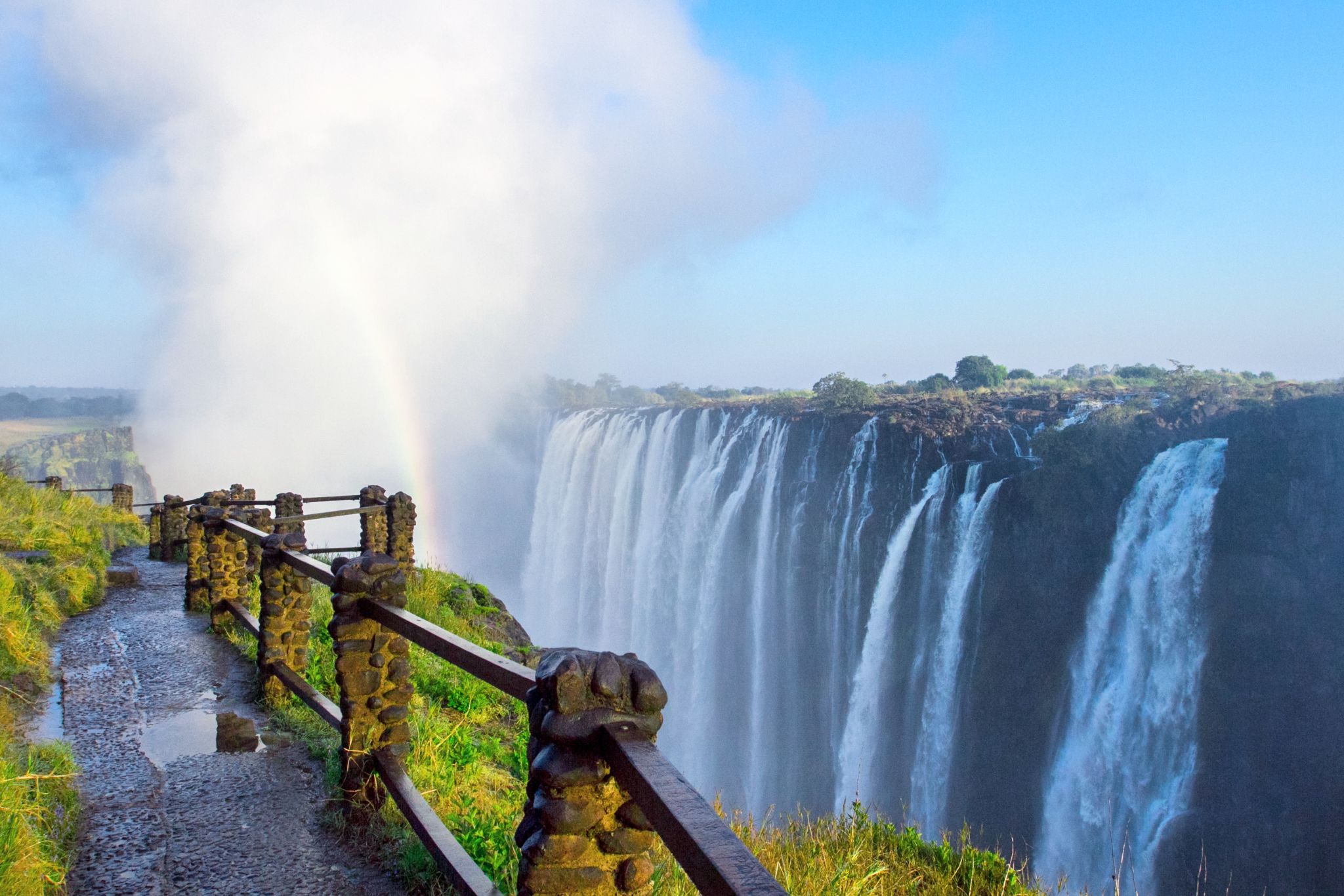The Victoria Falls
AE
For those seeking to experience the falls at their most powerful, visiting during the rainy season from November to March can be spectacular, as the water flow is at its peak. However, this time can also bring heavy rains and increased mist, which may obscure views and limit some activities.The Victoria Falls is not drying up.
The water levels of Victoria Falls are influenced by several factors, primarily seasonal rainfall and the Zambezi River's flow. During the rainy season, typically from November to March, the Zambezi River experiences increased water flow due to heavy rainfall in its catchment area. This results in higher water levels at the falls, leading to a more powerful and dramatic display, with mist rising high and creating rainbows in the sunlight.
Conversely, during the dry season, from May to October, water levels decrease significantly, exposing more of the rock formations beneath the falls and altering the waterfall's appearance. The flow can become much gentler, revealing the beauty of the surrounding cliffs and creating opportunities for activities like white-water rafting downstream. The fluctuations in water levels not only affect the visual spectacle of the falls but also impact the activities available in the area.
For those seeking to experience the falls at their most powerful, visiting during the rainy season from November to March can be spectacular, as the water flow is at its peak. This time can also bring rain showers and increased mist, which may obscure views and limit some activities. Visiting between May and October, during the dry season offers the favourable weather conditions, with lower humidity and pleasant temperatures. Water levels are lower, providing clear views of the falls and allowing for activities like walking along the cliffs and increased white-water rafting downstream.
During November, the flow is often restricted to the western side. The main falls and eastern, Zambia, side are dry.

